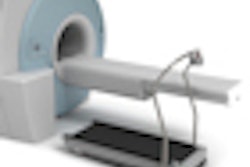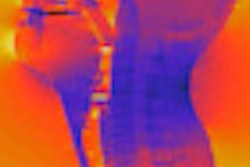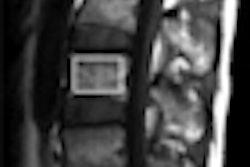Immediate adverse reactions to gadolinium-based MRI contrast are rare, but they do occur, according to a study published in the February issue of the American Journal of Roentgenology. What's more, some gadolinium agents have different adverse event rates than others.
Researchers from Cornell and Columbia universities in New York City focused on immediate adverse events, rather than more long-term reactions to contrast such as nephrogenic systemic fibrosis (NSF). The study is unique for its large patient population -- 150,000 subjects -- and long-term, 10-year follow-up period (AJR, Vol. 196:2, pp. 130-143).
"Gadolinium is still fantastically safe, but we do need to be aware that you can have an immediate adverse reaction," in addition to the risk of NSF, said lead study author Martin Prince, MD, PhD, professor of radiology at Weill Cornell Medical College and Columbia University College of Physicians and Surgeons in New York City.
The five agents
The retrospective review covered prospectively acquired data from January 2000 to December 2009. Five gadolinium-based contrast agents were used during those years:
- Gadopentetatedimeglumine (Magnevist, Bayer HealthCare Pharmaceuticals, Wayne, NJ)
- Gadodiamide (Omniscan, GE Healthcare, Chalfont St. Giles, U.K.)
- Gadoteridol (ProHance, Bracco Diagnostics, Princeton, NJ)
- Gadobenate dimeglumine (MultiHance, Bracco)
- Gadoxetate (Eovist, Bayer)
The researchers also reviewed all spontaneous reports of adverse events in the U.S. Food and Drug Administration's (FDA) Adverse Event Reporting System (AERS) to compare local experience to national results.
"Our data is similar to what has been published by other authors," Prince said. "However, most other authors' papers are a few hundred patients or a few thousand patients, and some over 40,000 or 50,000 patients. We have over 150,000 patients."
During the 10-year period, there were a total of 158,796 exams enhanced with gadolinium-based contrast, using gadodiamide (55,703), gadopentetate dimeglumine (66,157), gadoteridol (3,371), gadobenate dimeglumine (33,114), and gadoxetate (451) at the two institutions.
Adverse events
Hospital records detailed 140 immediate adverse events related to gadolinium-based contrast agents, including 46 infiltrations (three per 10,000 injections) and 94 gadolinium-based contrast agent acute adverse reactions (5.9 per 10,000 injections). Among the reactions, 74 were categorized as mild, 16 as moderate, and four as severe. The rate of severe reactions was approximately one in 40,000 injections.
The authors also noted three arrests, all occurring immediately after gadobenate dimeglumine injection. One case resulted in the death of a 59-year-old male outpatient with cirrhosis who was on a liver transplant waiting list. He had a remote history of gastrointestinal bleeding and was undergoing liver MRI for tumor surveillance.
They found that the immediate adverse reaction rate was 0.2 per 1,000 injections for gadodiamide, 0.5 per 1,000 injections for gadopentetate dimeglumine, 1.2 per 1,000 injections for gadobenate dimeglumine, and 3.3 per 1,000 injections for gadoteridol.
In addition, abdominal MRI had the highest immediate adverse event rate at 0.013%, compared with 0.0045% for brain MRI and 0.0034% for spine MRI. Immediate adverse events were also more likely in women, with a female-to-male ratio of 3.3-to-1, and in patients with a history of prior allergic reactions.
One severe reaction to gadoteridol was a near arrest in a 9-year-oldmale outpatient undergoing brain MRI with anesthesiologist-monitored sedation. When injected with 10 mL of gadoteridol, the boy "became combative, with urticaria, wheezing, and desaturation," the authors wrote.
The MRI exam was halted and the patient was immediately transferred to the pediatric anesthesia care unit, where he responded to epinephrine, albuterol, diphenhydramine, and Decadron.
Overall risk
Patients undergoing abdominal MRI may be considered at higher risk for immediate adverse reactions, the authors noted, although the higher rate of reactions observed may have been due to greater use of gadobenate dimeglumine in this patient group compared to other exams.
"I think the key finding is that patient safety requires looking at overall risk, not just tunnel vision on NSF risk," which has been associated with gadolinium-based contrast agents, Prince told AuntMinnie.com. "If you focus too much on only one of the multiple risks, you have the potential to have a less safe situation."
Given the chance for an immediate allergic reaction, Prince said both facilities have altered their procedures. "Now when we are using gadobenate dimeglumine, we always carefully monitor the patients. There are personnel there in the room [during injections] ... so that it is more automatic that they are monitoring the patient."
Prince believes there can be a big difference in how patient risk is handled depending on whether an imaging site is an outpatient or inpatient facility.
"Since it is easy to call the code team in the hospital and most NSF occurs in hospitalized patients, allergic reaction risk may be less important for inpatients," Prince said. "But for outpatients, NSF is exceedingly rare and there is no code team other than yourself; allergic reaction risks should be considered more seriously."
The authors noted several limitations to the study; for example, the FDA's AERS database "may not consistently capture gadolinium-based contrast agent adverse events, although the reporting of all such events is the policy at our hospitals," they wrote.
In addition, the study did not include delayed allergic reactions, such as NSF. Prince and colleagues noted that they were "not aware of any cases of NSF developing since we changed our protocol to using primarily ionic linear agents (gadopentetate dimeglumine and gadobenate dimeglumine) at no more than 0.1 mmol/kg or macrocyclic gadolinium-based contrast agents for doses greater than 0.1 mmol/kg."
| Martin Prince, MD, PhD, has patent agreements with Bracco Diagnostics, Bayer HealthCare, Mallinckrodt (Covidien), and GE Healthcare. |
By Wayne Forrest
AuntMinnie.com staff writer
February 15, 2011



















